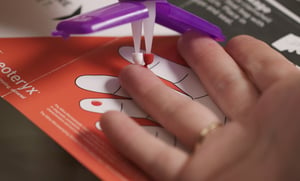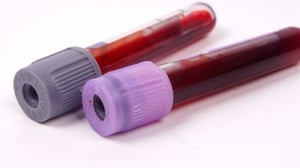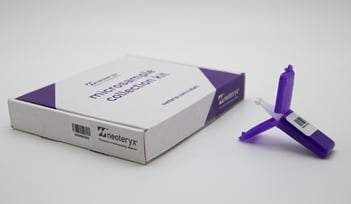Share this
mobile phlebotomy vs. patient-managed blood collection: a comparative analysis
by Neoteryx Microsampling on Jul 6, 2020 9:00:00 AM
 The COVID-19 pandemic ushered in new norms in healthcare. Among these is the evolution of blood collection methodologies. Both mobile phlebotomy and patient-managed blood collection have emerged as transformative, patient-centric approaches. But which one is the better option? Let's delve into the pros and cons of each.
The COVID-19 pandemic ushered in new norms in healthcare. Among these is the evolution of blood collection methodologies. Both mobile phlebotomy and patient-managed blood collection have emerged as transformative, patient-centric approaches. But which one is the better option? Let's delve into the pros and cons of each.
Introduction
 Blood collection, an essential aspect of diagnostics and patient monitoring, has undergone significant change to ensure safety during the pandemic. The shift away from traditional lab visits has been driven by the need to minimize potential virus exposure.
Blood collection, an essential aspect of diagnostics and patient monitoring, has undergone significant change to ensure safety during the pandemic. The shift away from traditional lab visits has been driven by the need to minimize potential virus exposure.
Mobile Phlebotomy: Home-Visit Blood Collection
Mobile phlebotomy involves dispatching a trained phlebotomist to a patient's location, reducing the need for in-person hospital or clinic visits.
Pros:
- Wet Blood Collection: Ideal for comprehensive blood panels.
- Scheduling Convenience: Avoids crowded waiting rooms and long queues.
- Flexibility: Adaptable to patient's routines, especially beneficial for assisted living residents.
- Mobility: Eliminates the need for patient transportation, minimizing exposure risk.
Cons:
- Exposure Risk: Health workers moving between homes can contract or transmit viruses. Additionally, the job inherently risks exposure to blood-borne pathogens.
- Invasiveness: Venipuncture can be painful and anxiety-inducing.
- Skill Variability: The quality of blood samples can vary based on the phlebotomist's expertise.
- Storage Constraints: Whole blood samples necessitate cold storage, complicating transport.
Patient-Managed Blood Collection: Empowering Patients
 Volumetric absorptive microsampling (VAMS) allows patients to collect capillary blood samples using devices like Mitra® at their convenience. It involves the patient using a simple finger-stick method to collect a small drop or two of capillary blood from their fingertip. The blood drops are absorbed onto the tip of a Mitra® device, which is designed with VAMS to absorb a scientifically precise volume of blood for lab analysis. The Mitra with VAMS provides a safer and easier blood collection technique that virtually anyone can use to collect their own blood sample at home or anywhere that is convenient. The hospital or lab only needs to liaise with the patient to send them a blood collection kit.
Volumetric absorptive microsampling (VAMS) allows patients to collect capillary blood samples using devices like Mitra® at their convenience. It involves the patient using a simple finger-stick method to collect a small drop or two of capillary blood from their fingertip. The blood drops are absorbed onto the tip of a Mitra® device, which is designed with VAMS to absorb a scientifically precise volume of blood for lab analysis. The Mitra with VAMS provides a safer and easier blood collection technique that virtually anyone can use to collect their own blood sample at home or anywhere that is convenient. The hospital or lab only needs to liaise with the patient to send them a blood collection kit.
 When the Mitra® Collection Kit arrives at the patient's home, they simply follow the instructions and use the supplies in the kit to collect a blood sample, repackage it, and return it by mail for processing at a lab.
When the Mitra® Collection Kit arrives at the patient's home, they simply follow the instructions and use the supplies in the kit to collect a blood sample, repackage it, and return it by mail for processing at a lab.
Once the patient has collected their blood sample and placed it back in the package for mailing, the specimen is considered a dried blood sample. The at-home specimen collection process is very user-friendly, and there’s no need for a professional phlebotomist or a visit to the clinic or lab.
Pros:
- Dried Blood Samples: Facilitates easier and more stable shipping.
- Minimal Invasiveness: Finger-stick collection is quick and causes less discomfort.
- Sample Stability: Drying the samples offers resistance to various environmental factors, reducing contamination risks.
Cons:
- Sensitivity: Repeated finger-sticks can cause discomfort.
- Test Limitations: Not all tests can utilize capillary dried blood samples.
- Technique Dependency: Proper execution is crucial for obtaining quality samples, though most kits are user-friendly.
Conclusion
As healthcare continues to evolve in the face of challenges like COVID-19, it's crucial to assess and adopt strategies that prioritize patient safety and convenience. Both mobile phlebotomy and patient-managed blood collection offer unique benefits, with the choice hinging on the specific needs of the patient and the test requirements. Remember, the goal is to enable accurate diagnostics while ensuring patient safety and comfort.
Image Credits: Trajan, Neoteryx, Shutterstock
Share this
- Microsampling (206)
- Research, Remote Research (119)
- Venipuncture Alternative (105)
- Clinical Trials, Clinical Research (83)
- Mitra® Device (73)
- Therapeutic Drug Monitoring, TDM (51)
- Dried Blood Spot, DBS (39)
- Biomonitoring, Health, Wellness (30)
- Infectious Disease, Vaccines, COVID-19 (24)
- Blood Microsampling, Serology (23)
- Omics, Multi-Omics (21)
- Decentralized Clinical Trial (DCT) (20)
- Specimen Collection (18)
- Toxicology, Doping, Drug/Alcohol Monitoring, PEth (17)
- Skin Microsampling, Microbiopsy (14)
- hemaPEN® Device (13)
- Preclinical Research, Animal Studies (12)
- Pharmaceuticals, Drug Development (9)
- Harpera Device (7)
- Industry News, Microsampling News (5)
- Antibodies, MAbs (3)
- Company Press Release, Product Press Release (3)
- Environmental Toxins, Exposures (1)
- July 2025 (1)
- May 2025 (1)
- April 2025 (2)
- December 2024 (2)
- November 2024 (1)
- October 2024 (3)
- September 2024 (1)
- June 2024 (1)
- May 2024 (1)
- April 2024 (4)
- March 2024 (1)
- February 2024 (2)
- January 2024 (4)
- December 2023 (3)
- November 2023 (3)
- October 2023 (3)
- September 2023 (3)
- July 2023 (3)
- June 2023 (2)
- April 2023 (2)
- March 2023 (2)
- February 2023 (2)
- January 2023 (3)
- December 2022 (2)
- November 2022 (3)
- October 2022 (4)
- September 2022 (3)
- August 2022 (5)
- July 2022 (2)
- June 2022 (2)
- May 2022 (4)
- April 2022 (3)
- March 2022 (3)
- February 2022 (4)
- January 2022 (5)
- December 2021 (3)
- November 2021 (5)
- October 2021 (3)
- September 2021 (3)
- August 2021 (4)
- July 2021 (4)
- June 2021 (4)
- May 2021 (4)
- April 2021 (3)
- March 2021 (5)
- February 2021 (4)
- January 2021 (4)
- December 2020 (3)
- November 2020 (5)
- October 2020 (4)
- September 2020 (3)
- August 2020 (3)
- July 2020 (6)
- June 2020 (4)
- May 2020 (4)
- April 2020 (3)
- March 2020 (6)
- February 2020 (3)
- January 2020 (4)
- December 2019 (5)
- November 2019 (4)
- October 2019 (2)
- September 2019 (4)
- August 2019 (4)
- July 2019 (3)
- June 2019 (7)
- May 2019 (6)
- April 2019 (5)
- March 2019 (6)
- February 2019 (5)
- January 2019 (8)
- December 2018 (3)
- November 2018 (4)
- October 2018 (7)
- September 2018 (6)
- August 2018 (5)
- July 2018 (8)
- June 2018 (6)
- May 2018 (5)
- April 2018 (6)
- March 2018 (4)
- February 2018 (6)
- January 2018 (4)
- December 2017 (2)
- November 2017 (3)
- October 2017 (2)
- September 2017 (4)
- August 2017 (2)
- July 2017 (4)
- June 2017 (5)
- May 2017 (6)
- April 2017 (6)
- March 2017 (5)
- February 2017 (4)
- January 2017 (1)
- July 2016 (3)
- May 2016 (1)
- April 2016 (2)



Comments (5)